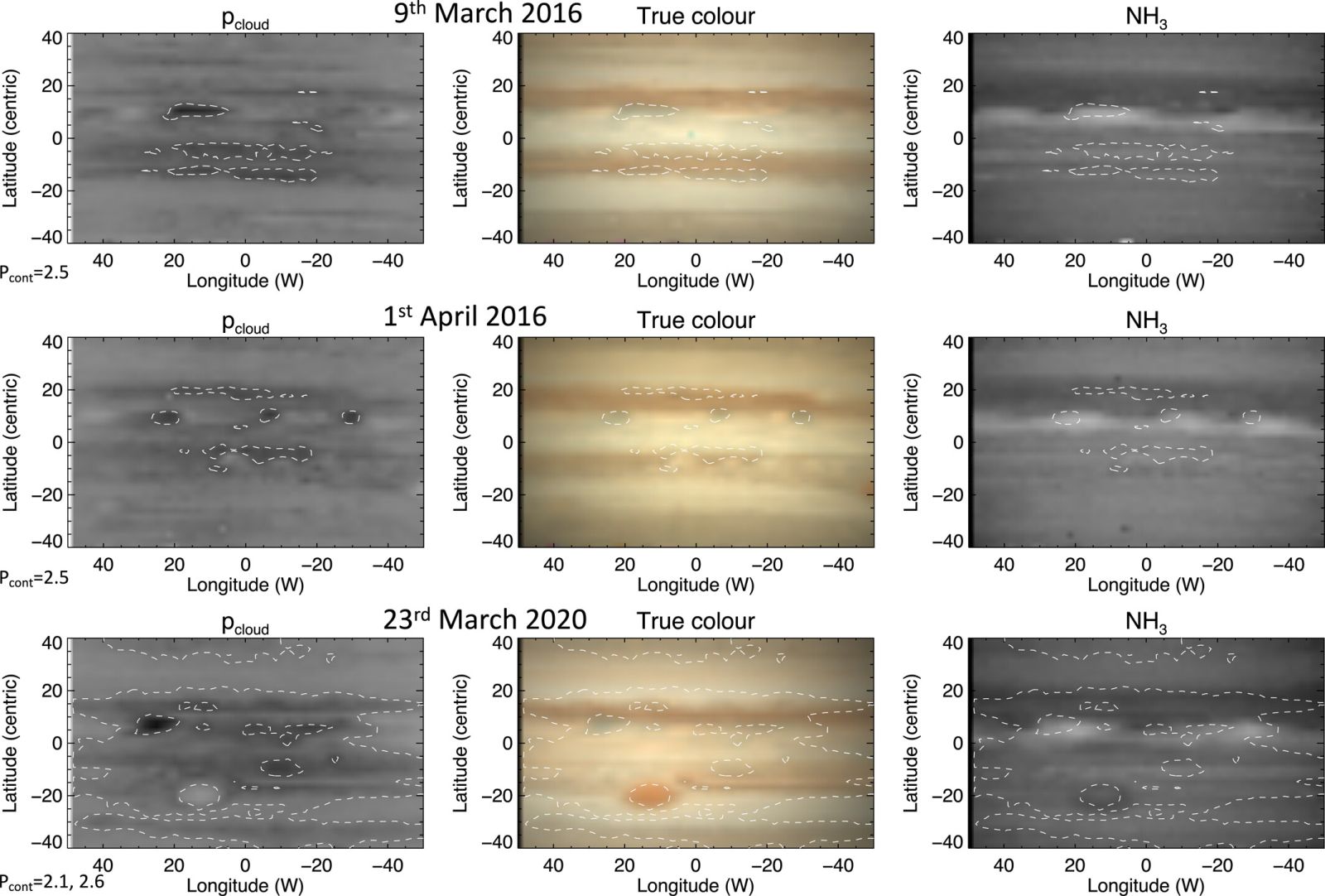Jupiter's clouds are not what we thought 🌫️
Published by Cédric,
Article author: Cédric DEPOND
Source: Journal of Geophysical Research: Planets
Other Languages: FR, DE, ES, PT
Article author: Cédric DEPOND
Source: Journal of Geophysical Research: Planets
Other Languages: FR, DE, ES, PT
Follow us on Google News (click on ☆)

Projected variation in ammonia abundance and pressure at the cloud tops near the center of the disk at selected dates in the VLT/MUSE archives.
Thanks to a collaboration between amateur and professional astronomers, a new study reveals that Jupiter's clouds are not composed of ammonia ice, as long believed. This breakthrough, published in the Journal of Geophysical Research: Planets, shows that simple tools are sufficient to provide evidence.
A method accessible to everyone
Amateur astronomer Steven Hill, based in Colorado, used commercial telescopes and color filters to map ammonia in Jupiter's atmosphere. His technique, based on spectroscopy, allowed for unprecedented precision in measuring the pressure and temperature of the clouds.
The results surprised scientists: the visible clouds are located in areas too warm for ammonia to condense into ice. This discovery challenges decades of research and paves the way for increased amateur participation in the study of giant planets.
The real composition of the clouds
Simulations conducted by Patrick Irwin's team at the University of Oxford confirm that Jupiter's clouds are actually primarily composed of ammonium hydrosulfide mixed with "smog" particles. These compounds, produced by photochemical reactions, explain the observed red and brown hues.
In some regions, where updrafts are very powerful, ammonia ice can temporarily form. These phenomena have been observed by the Galileo and Juno missions, but they remain rare and localized.
A fruitful collaboration
Steven Hill's method was applied to data from the MUSE spectrograph, installed on the Very Large Telescope in Chile. The results, obtained at lower cost and with great speed, align with those of the most sophisticated techniques.
This approach now allows amateurs to track variations in ammonia and pressure in Jupiter's atmosphere. It could also be applied to other planets, such as Saturn, where similar photochemical processes seem to occur.